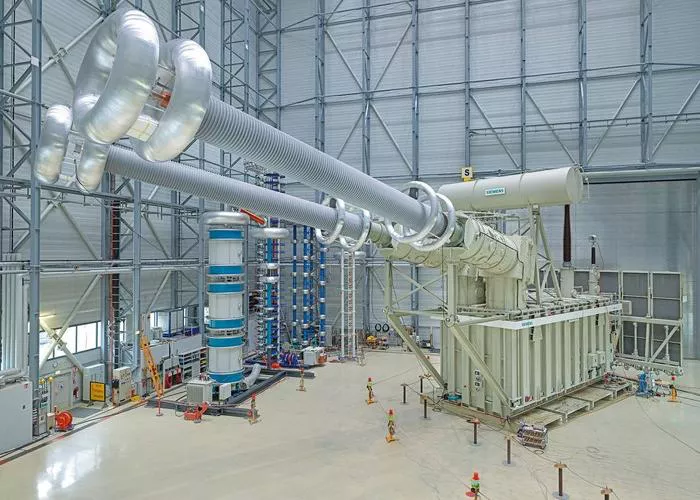Broadband transformers are essential components in modern electronic and communication systems, providing impedance matching, signal isolation, and voltage transformation across a wide range of frequencies. Unlike conventional transformers, which typically operate within a narrow band, broadband transformers are designed to function effectively over a broad frequency spectrum, making them indispensable in RF (radio frequency) and microwave applications.
In this article, we will explore the working principles, design considerations, applications, and advantages of broadband transformers. By the end of this discussion, you will have a comprehensive understanding of why these components are crucial in various engineering and technological fields.
Working Principle of Broadband Transformers
Broadband transformers operate on the same fundamental principles as conventional transformers: they transfer electrical energy from one circuit to another using electromagnetic induction. However, they are specifically optimized to minimize signal loss and distortion across a wide range of frequencies. The primary factors influencing their operation include:
1. Electromagnetic Induction
Broadband transformers function based on Faraday’s Law of Electromagnetic Induction. When an alternating current (AC) flows through the primary winding, it generates a time-varying magnetic field, which induces a corresponding voltage in the secondary winding. The turns ratio of the windings determines the transformation of voltage and current between the primary and secondary circuits.
2. Transmission Line Effects
Unlike traditional power transformers, broadband transformers must account for transmission line effects that arise due to high-frequency operation. These effects include:
- Parasitic capacitance between windings
- Leakage inductance
- Skin effect and proximity effect
- Dielectric losses in the core material
To ensure efficient performance over a broad frequency range, designers must carefully optimize the winding structure and core material selection.
3. Core and Winding Design
The choice of core material significantly impacts the performance of broadband transformers. Commonly used materials include ferrites and powdered iron, which offer low loss and high permeability at RF and microwave frequencies. Additionally, winding configurations such as twisted pairs, bifilar, or trifilar windings are used to minimize parasitic capacitance and leakage inductance, ensuring effective high-frequency operation.
Design Considerations for Broadband Transformers
When designing broadband transformers, engineers must address several key factors to optimize performance:
1. Bandwidth Requirements
The frequency range over which the transformer must operate is a critical design parameter. The bandwidth is influenced by the winding technique, core material, and circuit topology. To achieve a wider bandwidth, low-loss core materials and efficient winding configurations are employed.
2. Impedance Matching
Broadband transformers are often used for impedance transformation in RF circuits to ensure maximum power transfer. The turns ratio of the transformer is selected to match the impedance of the source and the load.
3. Insertion Loss and Efficiency
Minimizing insertion loss is crucial for maintaining signal integrity. Low-loss core materials and precision winding techniques help enhance transformer efficiency.
4. Size and Packaging Constraints
In applications where space is limited, such as in miniaturized communication systems, broadband transformers must be designed to meet stringent size and weight constraints while maintaining performance.
5. Thermal Stability
High-frequency operation generates heat, which can degrade performance and reliability. Proper thermal management, including material selection and heat dissipation techniques, ensures the transformer operates within safe temperature limits.
Applications of Broadband Transformers
Broadband transformers are widely used in various fields, including:
1. RF and Microwave Communication Systems
- Used in impedance matching networks to ensure efficient power transfer.
- Found in RF amplifiers, mixers, and oscillators.
- Employed in antenna coupling circuits for signal transmission and reception.
2. Telecommunications
- Integral components in high-speed data transmission networks.
- Used in telephone line coupling and DSL modems to enhance signal integrity.
- Implemented in fiber optic transceivers to improve communication performance.
3. Radar and Military Electronics
- Critical in radar signal processing and high-frequency signal transmission.
- Used in electronic warfare (EW) systems for secure communication.
4. Medical Imaging and Equipment
- Applied in MRI (Magnetic Resonance Imaging) systems for signal processing.
- Found in various diagnostic and monitoring equipment.
5. Aerospace and Satellite Communication
- Used in satellite communication transponders for signal integrity.
- Found in space-grade RF systems where reliability is paramount.
6. Test and Measurement Instruments
- Implemented in network analyzers and signal processing equipment.
- Used in precision impedance analyzers and spectrum analyzers.
Advantages of Broadband Transformers
Broadband transformers offer several benefits that make them superior to narrowband transformers in many applications:
1. Wide Frequency Response
Capable of handling signals over a broad spectrum, making them ideal for modern communication systems.
2. High Efficiency and Low Loss
Designed with low-loss core materials and optimal winding techniques to maximize efficiency.
3. Compact and Lightweight Design
Many broadband transformers are designed with miniaturization in mind, making them suitable for compact electronic devices.
4. Superior Signal Integrity
Reduced insertion loss and distortion ensure accurate signal transmission.
5. Reliable Performance in Harsh Environments
Designed to withstand extreme temperatures, vibrations, and electromagnetic interference (EMI).
Conclusion
Broadband transformers are crucial components in modern RF, telecommunications, aerospace, medical, and military applications. Their ability to efficiently transfer electrical energy across a wide frequency range makes them indispensable in various high-frequency systems.
By optimizing factors such as core material selection, winding techniques, impedance matching, and thermal management, engineers can design broadband transformers that deliver superior performance with minimal losses. As technology advances, the demand for high-speed, high-frequency communication and signal processing systems will continue to grow, further solidifying the importance of broadband transformers in the engineering world.


